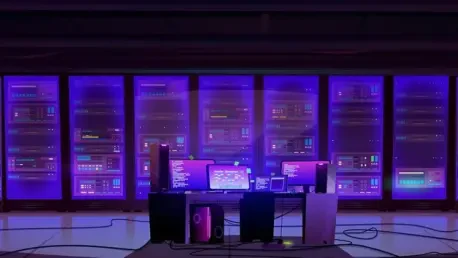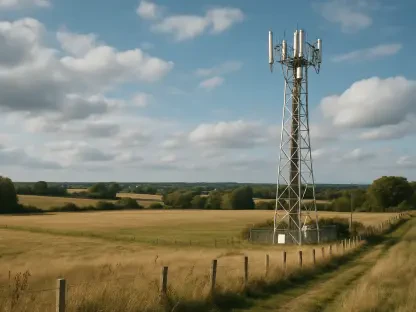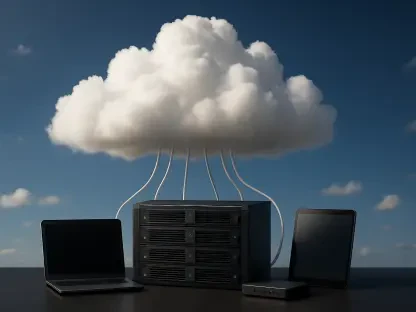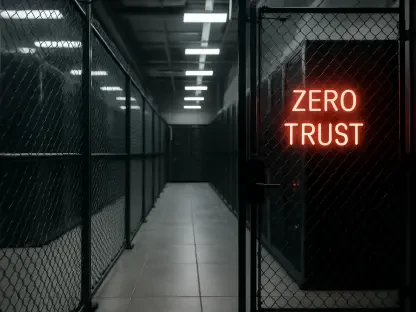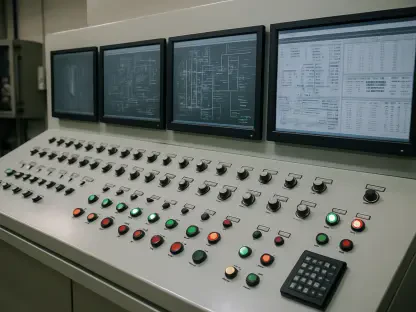What if the digital infrastructure powering every click, stream, and cloud service is silently undermining global sustainability goals? Data centers, the hidden giants of the tech world, consume vast amounts of electricity—often from sources that aren’t as green as claimed. With energy demands soaring, the industry faces intense scrutiny over its environmental impact, raising questions about whether promises of renewable energy are genuine or merely clever marketing. This exploration delves into the heart of these claims, peeling back layers of corporate messaging to reveal the reality behind the green facade.
The significance of this issue cannot be overstated. As data centers account for roughly 1-2% of global electricity usage—a figure projected to grow with the rise of AI and cloud computing—their energy choices have far-reaching implications for climate change targets. Public demand for transparency and corporate accountability adds pressure on operators to prove their sustainability credentials. This narrative uncovers the complexities of renewable energy adoption in an industry caught between operational necessity and environmental responsibility, setting the stage for a deeper look at the truth behind the headlines.
Why Data Centers Face Renewable Energy Scrutiny
Data centers have become indispensable to modern life, supporting everything from social media to critical business operations. Yet, their energy consumption is staggering, often rivaling that of small nations. With global data traffic increasing exponentially, the spotlight has turned to how these facilities source their power, especially as fossil fuel reliance clashes with sustainability goals. The tension between keeping servers running 24/7 and reducing carbon footprints has placed the sector under a microscope.
This scrutiny isn’t just academic—it’s driven by real-world consequences. Governments, activists, and consumers are pushing for cleaner practices, while tech giants face reputational risks if their green promises don’t hold up. Reports estimate that without significant shifts, data center emissions could double by 2030, making the adoption of renewable energy not just a moral imperative but a strategic necessity for long-term viability in a climate-conscious market.
The High Stakes of Sustainability in a Digital Age
Beyond the raw numbers, the sustainability of data centers ties directly to broader planetary challenges. Climate change, resource depletion, and corporate accountability are no longer abstract concepts but urgent priorities shaping public policy and investor decisions. The industry’s massive energy appetite positions it as a key player in either accelerating or hindering progress toward global carbon neutrality targets.
Moreover, the expectations of stakeholders are evolving rapidly. Customers demand eco-friendly services, while regulators tighten emissions standards, creating a complex web of pressures. For data center operators, balancing uptime reliability with genuine renewable integration is a tightrope walk, where failure to act could mean losing trust and market share in an increasingly green-focused economy.
This dynamic also reflects a cultural shift. As society leans harder into digital solutions, the hidden environmental cost of that convenience comes into sharper focus. The question looms: can an industry so vital to progress truly align with a sustainable future, or are compromises inevitable?
Decoding Green Claims: Promises versus Practice
Not every claim of “100% renewable” tells the full story. Data centers often rely on three main strategies to align with green energy: purchasing Renewable Energy Credits (RECs), funding renewable projects that feed into the general grid, and direct behind-the-meter sourcing where power is generated on-site. RECs, while cost-effective and widely used—accounting for over 60% of renewable claims in the sector—often mask the fact that actual power may still come from fossil fuel-heavy grids.
Contrast this with more tangible efforts. Google, for instance, invests heavily in grid-connected wind and solar farms, boosting overall renewable capacity but not necessarily powering its facilities directly. On the other hand, Verne Global in Iceland taps geothermal energy for a true behind-the-meter model, though such setups are rare. The gap between glossy sustainability reports and the messy reality of grid dependency highlights a critical disconnect in how green achievements are measured and communicated.
This discrepancy often confuses stakeholders. While RECs allow companies to offset their carbon footprint on paper, the physical energy mix powering servers may remain unchanged. Industry data suggests that only a small fraction of data centers—less than 10%—achieve direct renewable usage, exposing how marketing can outpace actual progress in curbing emissions.
Insights from the Frontlines: Industry Voices
Digging deeper, perspectives from experts and operators paint a nuanced picture. A 2025 study by the International Energy Agency questions the effectiveness of RECs, arguing that they often serve as a symbolic gesture rather than a driver of real decarbonization. Meanwhile, Amazon publicly claims to match 100% of its energy use with renewables, but critics note this relies heavily on offsets rather than on-site generation, raising doubts about the immediacy of impact.
A striking example comes from Iceland, where Verne Global leverages the region’s abundant geothermal and hydroelectric resources. An operator there noted, “Our location allows us to bypass many grid issues others face, but scaling this model globally is a massive challenge.” This real-world case underscores how geography can dictate sustainability outcomes, often more than corporate intent.
Academic and industry analyses further reveal a slow shift toward direct renewable integration. Despite bold commitments, many operators admit that high costs and technical barriers—like the intermittency of solar and wind—limit progress. These voices collectively suggest that while ambition exists, the path to true green energy in data centers remains steep and uneven.
Charting a Course for Genuine Renewable Adoption
So, how can the industry move beyond superficial sustainability? Prioritizing behind-the-meter projects, though expensive, offers a direct link to renewable sources, cutting reliance on mixed grids. Regions with natural advantages, such as Iceland’s hydroelectric abundance, provide a blueprint, but even in less ideal locations, investments in stable options like geothermal could yield long-term benefits if scaled strategically.
Transparency is another critical lever. Advocating for better grid tracking systems would allow operators to verify energy origins, building trust with stakeholders. Additionally, addressing the intermittent nature of renewables through battery storage or hybrid systems can stabilize supply, though upfront costs remain a hurdle for widespread adoption.
Finally, collaboration holds untapped potential. Partnerships between data center operators, renewable developers, and policymakers could accelerate infrastructure growth, especially as power demands are expected to surge through 2027. By aligning financial incentives with environmental goals, the sector can transform symbolic gestures into measurable impact, paving the way for a more accountable energy future.
Looking back, the journey to unmask renewable energy claims in data centers revealed a landscape of ambition tempered by practical constraints. Operators have grappled with balancing soaring power needs against genuine sustainability, often leaning on financial offsets rather than direct green solutions. The gap between public promises and on-the-ground reality has been stark, yet pockets of innovation—especially in regions with natural renewable wealth—offer glimmers of hope. Moving forward, the industry is poised to invest in on-site generation and push for grid transparency, ensuring that green claims evolve from marketing tools into concrete actions. The challenge remains steep, but with strategic focus, a truly sustainable digital backbone seems within reach.
